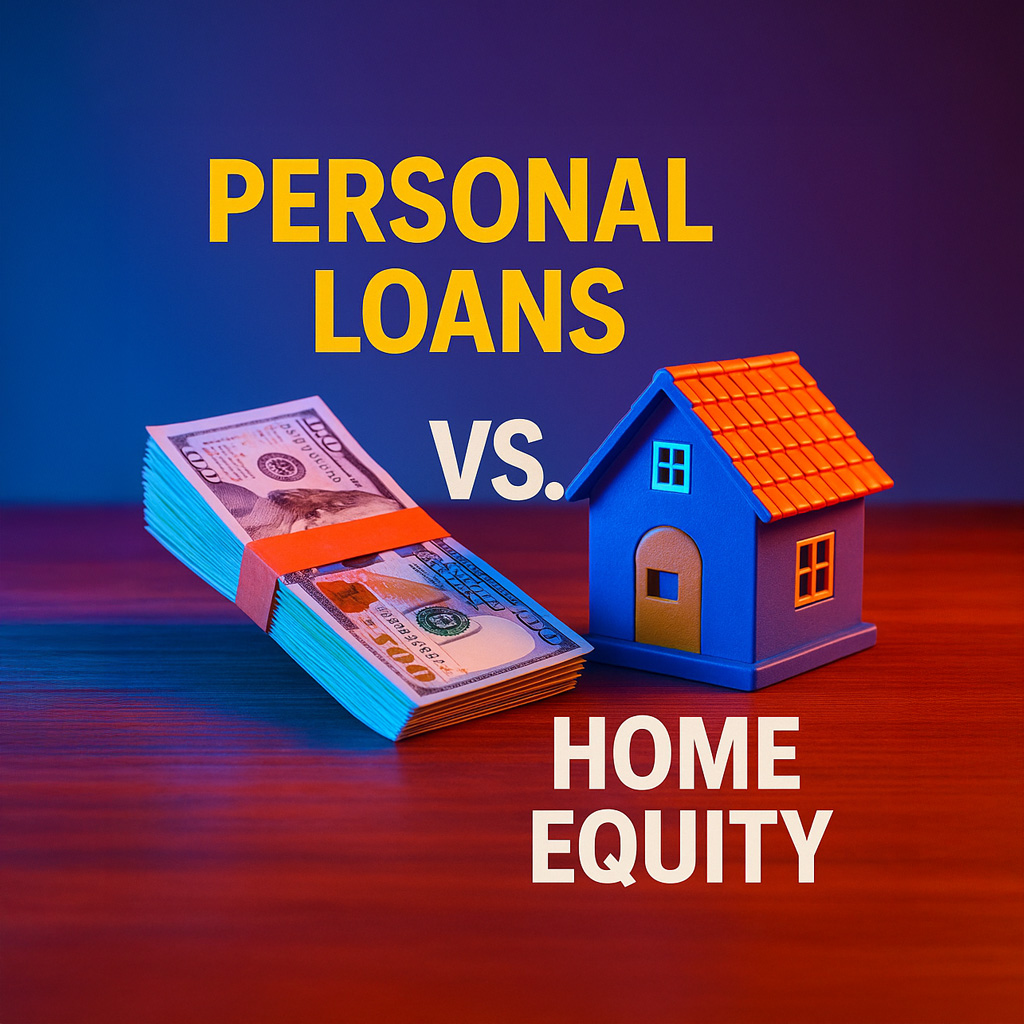When it comes to financing significant expenses, two common options often come up: personal loans and home equity. Both are popular choices for borrowers looking to access funds for various needs such as home improvements, debt consolidation, or major purchases. Understanding the differences, advantages, and drawbacks of each option is essential to making an informed decision that fits your financial situation and goals.
Understanding Personal Loans and Home Equity
Before diving into a comparison, let’s clarify what personal loans and home equity really mean.
Personal loans are unsecured loans offered by banks, credit unions, or online lenders. They typically come with a fixed term and fixed interest rate, and don’t require collateral, which means your home or other assets aren’t at risk if you default. These loans are often used for consolidating debt, medical bills, or unexpected major expenses.
Home equity, on the other hand, refers to the value you have built up in your home. Home equity loans or home equity lines of credit (HELOCs) allow homeowners to borrow against that value. Because the loan is secured by your home, lenders generally offer lower interest rates compared to personal loans. However, failing to repay a home equity loan can lead to foreclosure.
Key Differences Between Personal Loans and Home Equity
1. Collateral Requirements
One of the most important distinctions between personal loans and home equity is collateral. Personal loans are typically unsecured, meaning they do not require collateral. This lowers the risk of losing your assets but may result in higher interest rates.
Home equity loans, conversely, require your home as collateral. This secured nature usually allows for better terms but carries the risk of losing your home if you fail to repay.
2. Interest Rates
Interest rates on personal loans tend to be higher than home equity loans or HELOCs because lenders are taking on more risk without collateral. Personal loan rates can vary widely, often ranging from 6% to 36%, based largely on your credit score and income.
Home equity loan interest rates are often lower, sometimes as low as prime rate plus a small margin, which can translate to significant savings over time. Additionally, the interest payments on home equity loans may be tax-deductible, depending on your usage, which adds an incentive for certain borrowers.
3. Loan Amounts and Terms
Personal loans usually have fixed amounts and terms, typically ranging from one to seven years. The simplicity of fixed monthly payments makes budgeting easier, but there’s less flexibility.
Home equity loans provide larger sums, commonly up to 85% of your home’s value minus what you owe on your mortgage. HELOCs offer even more flexibility, acting like a credit card where you can borrow and repay repeatedly during a draw period, often 5 to 10 years.
4. Application Process and Speed
Personal loans tend to have faster and simpler application processes. Many lenders offer quick approvals and funding within a few days—sometimes even within 24 hours.
Home equity loans require more paperwork, home appraisals, and underwriting. This can extend approval times to several weeks, making them less suitable if you need immediate funds.
When to Choose Personal Loans
Personal loans are ideal for borrowers who need funding quickly without risking assets. They’re especially useful for:
– Consolidating high-interest credit card debt
– Covering emergency expenses or medical bills
– Financing smaller home improvements without complex paperwork
– Borrowers with insufficient home equity or those who own rental properties not eligible for home equity loans
Because they don’t require collateral, they’re a straightforward option for those who cannot or prefer not to tap into their home’s equity.
When Home Equity Might Be the Better Option
Accessing home equity can be a smart strategy if you:
– Need a larger loan amount for extensive home renovations or education expenses
– Have a strong payment history and want to benefit from lower interest rates
– Are comfortable using your home as collateral and understand the risks involved
– Prefer the potential tax deductibility of interest payments
– Want flexible borrowing options offered by HELOCs for ongoing expenses
Using home equity can substantially reduce the overall cost of borrowing if you have the financial stability to manage it effectively.
Risks and Considerations for Both Options
No borrowing decision is without risks or caveats. For personal loans, higher interest rates and fees can increase your repayment burden, so it’s important to shop around and understand the terms.
With home equity, the biggest risk is the potential loss of your home if you default. This makes it crucial to have a reliable repayment plan and ensure that you’re borrowing responsibly.
Additionally, both types of loans affect your credit score differently. Personal loans impact your installment loan profile, while a HELOC can influence your credit utilization ratio—a key factor in credit scoring.
Final Thoughts: Making the Best Choice
Selecting between personal loans and home equity depends heavily on your financial needs, goals, risk tolerance, and timeline. Personal loans offer speed and simplicity without risking your home, generally suited for smaller or quicker funding needs.
Home equity financing can be more cost-effective for larger amounts but comes with added risk and complexity.
Before deciding, consider consulting with a financial advisor to evaluate your unique situation. Review your credit status, calculate potential interest costs, and assess how each loan fits into your overall financial health.
In the end, understanding these two distinct borrowing avenues empowers you to make the best choice for a secure and manageable financial future.
